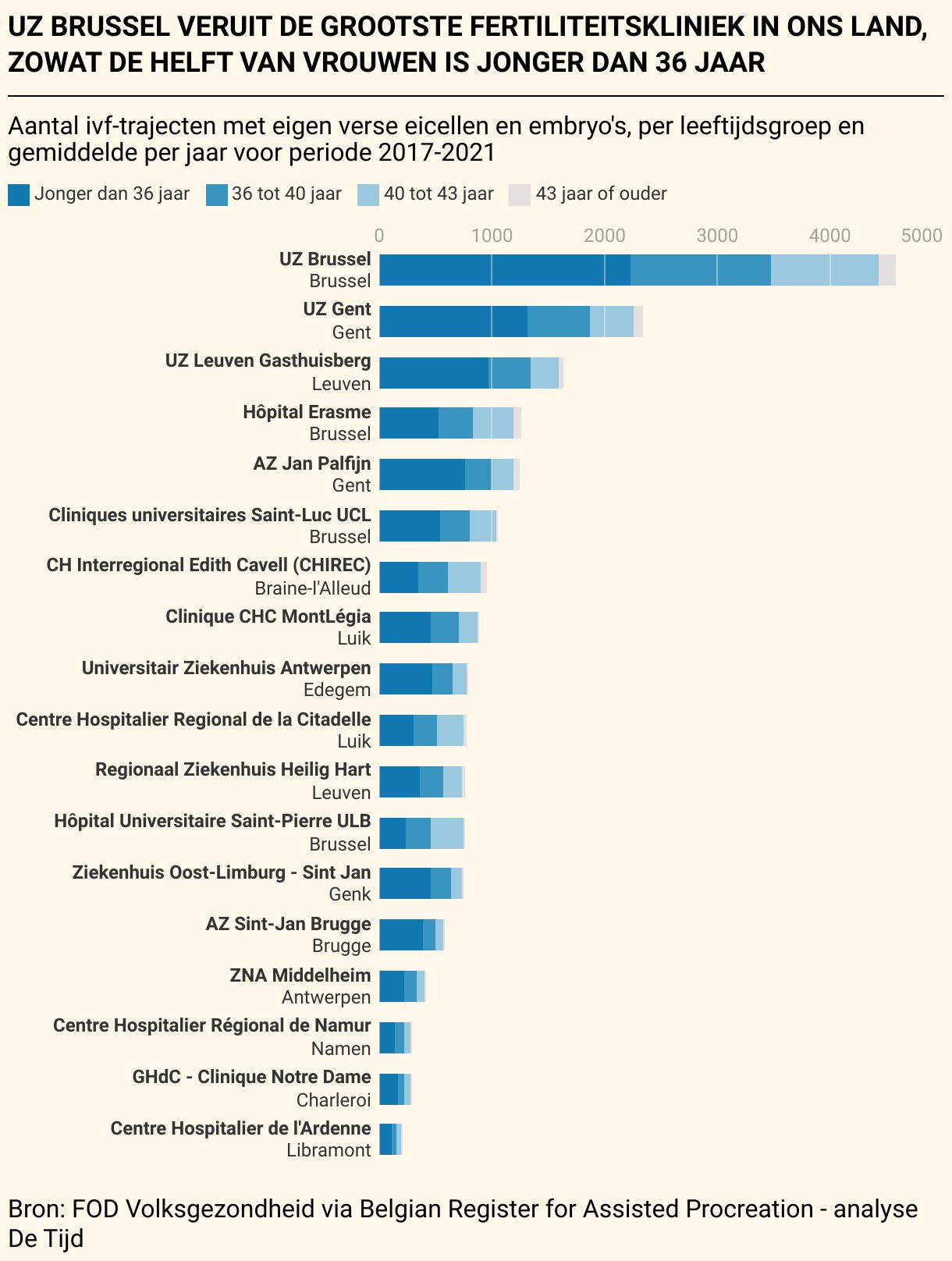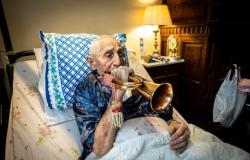For the first time we have insight into the results of Belgian IVF centers. They vary widely. How is that possible?
The last hope for a child of my own. This is IVF or in vitro fertilization often for those who cannot become pregnant in a normal way. Every year, thousands of people in our country opt for this radical fertility treatment. All together they make up to 40,000 attempts.
These are physically and mentally taxing processes that can last months to years and can be accompanied by side effects due to hormone therapy, sometimes painful egg punctures and stress. At the same time, patients do not know whether all their efforts are paying off. Only 1 in 3 women have a child after a first IVF attempt. Often several attempts are required and the process starts all over again.
Patients also do not know how successful their IVF clinic is. The results per center are not public in our country. The College for Reproductive Medicine draws up an annual quality report, ranking all 18 IVF centers. The hospitals only see their own results and know their place in that ranking.
De Tijd obtained the latest report for the first time. This shows that the differences between the centers are large. In the extreme cases, their success rates are more than double. What is the explanation for that?
Experts emphasize that the general level of Belgian fertility medicine is very high. That does not alter the fact that some are concerned about the differing results. “For centers that score below average, we must check whether this is the case year after year, and whether quality improvement is possible,” says Willem Verpoest, the chairman of the Belgian Association for Reproductive Medicine (BSRM). ‘Are they using the right techniques? Is their lab well equipped? Is the staff sufficiently trained?’
For centers that score below average, we must check whether this is the case year after year and whether quality improvement is possible.
Willem Verpoest
President of the Belgian Association for Reproductive Medicine
Diane De Neubourg, the head of the fertility center at the Antwerp University Hospital, also sees a number of worrying matters in the report. For example, in one center more than 10 percent twins were born after IVF. ‘This indicates that two embryos are often transferred. This is allowed, but we try to do as little as possible because a twin pregnancy entails major health risks.’
Smoking and obese patients
There are concerns not only about the content of the report, the fact that the document is now public is a sensitive matter. Many doctors fear that patients will base their choice of their IVF center on this. The data are not reliable enough for that, says Dominic Stoop, chairman of the College for Reproductive Medicine. According to him, a number of important factors have not been taken into account. The patient population is not mapped. ‘It may be that some centers help more smoking or obese patients. We know that these target groups have less chance of having a child.’
Fertility doctor Wim Decleer of the AZ Jan Palfijn in Ghent agrees. That dangles at the bottom of the ranking. According to him, this has nothing to do with their competencies. ‘We are a fertility center that mainly sees underprivileged people. They more often have health problems and a less good lifestyle. And they are not very adherent. These are all factors that make pregnancy difficult.’
Just because you score less well one year does not mean you are doing poorly.
Arne van de Vijver
Head of fertility department AZ Sint-Jan Brugge
The size of a center also plays a role, says De Neubourg. ‘At centers that only perform a hundred treatments per year, the outcomes for some patients with a poorer prognosis will fluctuate more than at centers that perform hundreds.’
The AZ Sint-Jan in Bruges is at the top of the rankings and carries out approximately 500 cycles with fresh embryos per year. The UZ Brussels, which achieves average results, does ten times as much annually. “Even though we are satisfied with our position and it is an indication of our good work, we still have to nuance the figures,” says department head Arne van de Vijver. ‘Just because you score one year less well does not mean you are doing poorly.’ He indicates that ten years earlier they were below average in terms of chances of success after a fresh transfer. ‘We then immediately started analyzing and adjusting a number of issues.’

Throwing away
The Netherlands and the United Kingdom publish the success rates per center every year. We are also calling for this to be done consistently. ‘That is possible, provided that the way we measure and interpret quality changes. It cannot be that we throw away raw data every year,’ says Decleer of Jan Palfijn. According to him, we risk that centers will systematically refuse people with less favorable prognosis in order to rank as high as possible. ‘Some centers already consistently refuse women over 40 years of age, with a high body mass index (BMI) or diabetes.’
The Belgian Association for Reproductive Medicine is setting up a new quality measurement. She involves the government and foreign experts. ‘The aim is to arrive at a number of good and supported quality indicators, which can be monitored by an independent organization. This should impose improvement measures and deadlines on hospitals,” says Verpoest.
De Verdwaalde Ooievaar, an association of prospective parents, does not believe that people will only go to centers with the highest success rates. Chairwoman Marijke Merckx: ‘Most patients are well aware that IVF is an uncertain process. For that reason, they also attach great importance to human aspects. Sufficient explanation, understanding, compassion: this is also how they judge a hospital. These things are much more difficult to put into figures.’
What is IVF?
In vitro fertilization (IVF) is a technique in which fertilization does not take place in the body, but in a dish in a laboratory. Special fluids are added to an egg and a sperm cell, from which an embryo can be created a few days later. Once properly developed, the fetus is placed in a woman’s uterus so that it implants and grows into a healthy child. The chance of success is about one in three.
Tags: big differences fertility clinics
-






